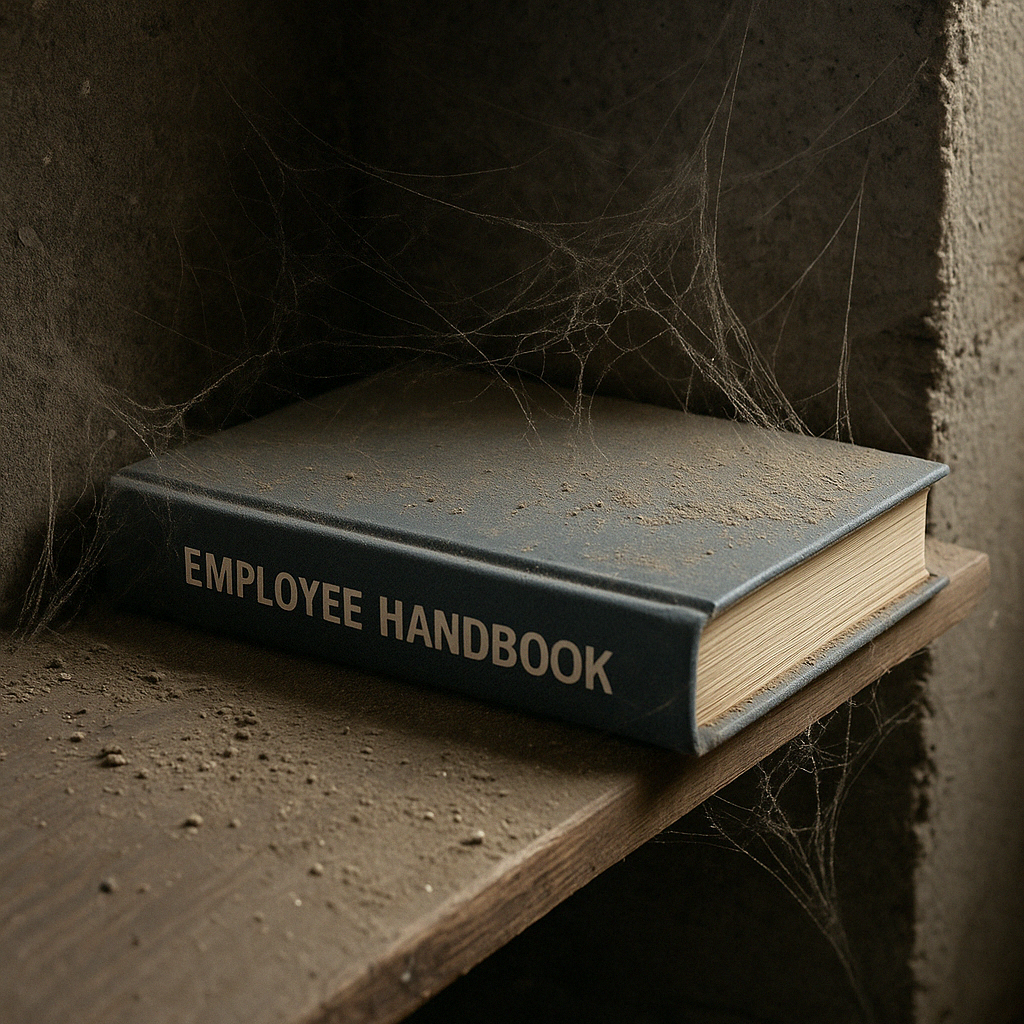If your employee handbook only gets dusted off when there’s a dispute or a new hire, you’re missing the point. Handbooks aren’t just compliance tools – they are day-to-day resources that can reduce confusion, support decisions, and make your business run smoother. But only if they’re actually used.
A good employee handbook should be a tool your team uses every week to stay aligned, reduce confusion, and save time. Here are five simple but effective ways to actively use your handbook – and why it matters for your business.
1. Use It to Answer Common Questions
Questions like:
“What’s the rule on personal phone use during work hours?”
“Can I take carers leave for my neighbour?”
“When do we get paid if payday falls on a public holiday?”
If you’ve got a clear, practical handbook, these answers are already in there. Instead of answering the same questions again and again, train your team to refer to the handbook first. You’ll reduce back-and-forth, promote consistency, and build a culture of self-service.
Tip: Make it easy to access. Pin it to your team’s online workspace or print a copy for the break room.
2. Use It in Weekly Team Meetings

You don’t need to read it cover to cover – but a quick five-minute spotlight can go a long way.
Each week, pick one policy to highlight. It could be:
- A refresher on your leave process before school holidays
- A quick summary of your dress code ahead of client meetings
- A reminder about reporting near misses in your safety policy
It’s a no-fuss way to keep policies top of mind and build a culture where people actually know the rules.
3. Use It When You’re Onboarding New Staff

Handbooks shouldn’t just be about listing out the rules – they should be about expectations, values, and how your business runs. New employees will have lots of questions. Your handbook is the one source of truth.
Use it to:
- Reinforce how performance is measured
- Explain how disputes or complaints are handled
- Show what behaviour is expected from day one
This sets a professional tone from the outset.
4. Use It to Back You Up in Difficult Conversations
If an employee is pushing the boundaries – late to work, acting unprofessionally, or skipping processes – your handbook will help you stay calm, fair, and consistent.
Point to the relevant policy, and you’re no longer “making up rules as you go.” You’re referring to an agreed framework.
In small teams, where things can feel personal fast, this approach protects relationships and your business.
5. Use It as a Living Document
Your handbook isn’t carved in stone. It should reflect how your business operates now, not how it looked two years ago.
Make time each quarter to:
- Review any recent legal changes (like leave entitlements or right to disconnect laws)
- Check whether your procedures still match what’s actually happening
- Ask your team for feedback on what’s missing or unclear
A handbook that evolves with your business stays relevant. It’s also more likely to be used, trusted, and followed.
*For just $9 a month, My Employee Handbook users can be advised every time there is a legislation change that relates to their organisation, and every two years, which is how often your employee handbook should be overhauled.
The Bottom Line
Your employee handbook isn’t just a legal safety net. It’s a tool that can save you hours, reduce conflict, and make your business more professional and predictable.
If your current handbook is too long, out-of-date, or full of legalese, it’s time to change that. A clear, practical, and easy-to-use handbook helps everyone – from the newest hire to the most seasoned manager – stay on the same page.
Start small: pick one of these tips, and use it this week. Your handbook shouldn’t be a doorstop. It should be part of how your business runs.










